The Internet!
There is a lot of information how to make kombucha. Not much about how to make the healthiest kombucha. An important distinction. Recently, Kevita funded a study that “analyzed 88 samples of kombucha for total sugar”. They found that some kombucha brands underreported the sugar content by as much as 450%.
Wasn’t kombucha supposed to replace soda? With sixteen grams and more of sugar per bottle, it’s hard to see the difference. Making kombucha requires understanding the relationships – sugar conversion to probiotics and beneficial acids – the time-temp cycle, and the ratio of yeasts and bacteria in scoby and brew.
Using our proprietary – Pure Kombucha™ – anti-processed, process. Rather, believing in energy, over capitalism. Purists in search of toxicity reduction, the cleanest food and drink. Our advice is the direct result of 10 years experience making kombucha and 20 years perfecting tea brewing techniques. We work with modern research done by universities and scientists. Drawing inspiration from ancient craft brewing techniques.
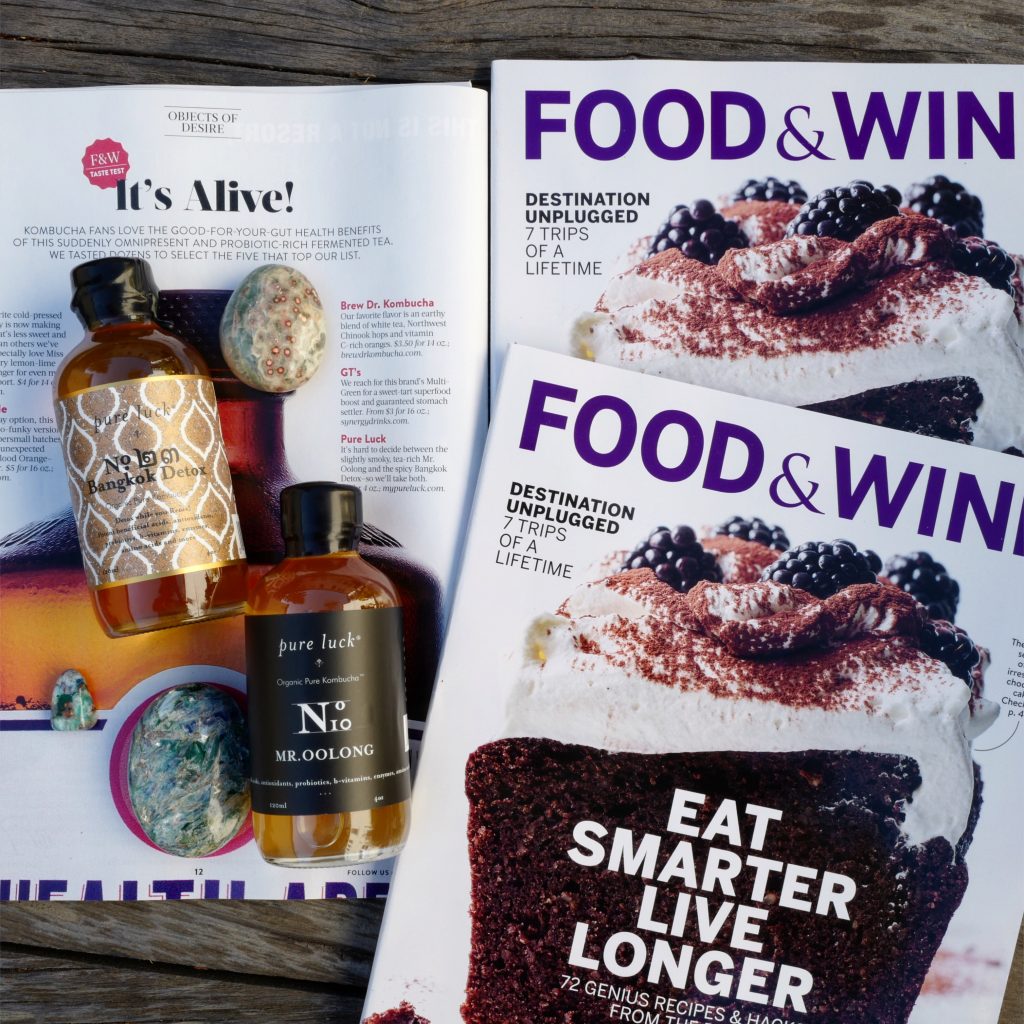
Our first suggestion to would be kombucha brewers is, when you start making kombucha acquire cultures from multiple sources. Biodiversity is a great thing.
Who makes our kombucha?
Brand founder and Head Brewmaster, Brett Casper. A decade of kombucha brewing experience, with 20 years of tea brewing experience. Our brewmaster is a bit of a nerd. All the information you will find here is from proven, reliable sources, masters of craft and our own scientific methods and experience.
Kombucha starts with tea, water and sugar. Your choice of base ingredients is extremely important to create a delicious, healthy kombucha. Always, use organic ingredients.
If you drink kombucha for the probiotics, antioxidants and detoxifying beneficial acids then ferment your kombucha a minimum of 21 days.
Brewing Tea
*Loose leaf teas are best
1) Never brew tea in metal, aluminum or plastic – Tea is acidic and will leach the taste and chemicals used from your brew vessel
2) Use the right brewing temperature, different teas have different brewing temperatures that work best – Too high a temperature will result in a bitter tasting brew and “off flavors”
3) Measure the tea properly – Too much tea to water ratio will result in “off flavors” and bitterness, too little tea will result in a flat taste.
4) Compost the tea – Tea makes excellent compost, it actually has very high contents of things necessary for the soil and plants
Kombucha Myth – Kombucha can only be made with a blend of green and black tea. This is false. Kombucha can be made with almost any proper tea. And you can blend in almost any herb or dried berries/ fruits you like.
Water
Water will make or break your tea and by relation your kombucha. Distilled water is no good because it hasn’t got any minerals, and never use tap water. Tap water is full of chemicals, chlorine and deposits from the pipes. Mineral water and spring water are best to brew tea.
* Choose a water with a pH of 7 – that’s neutral
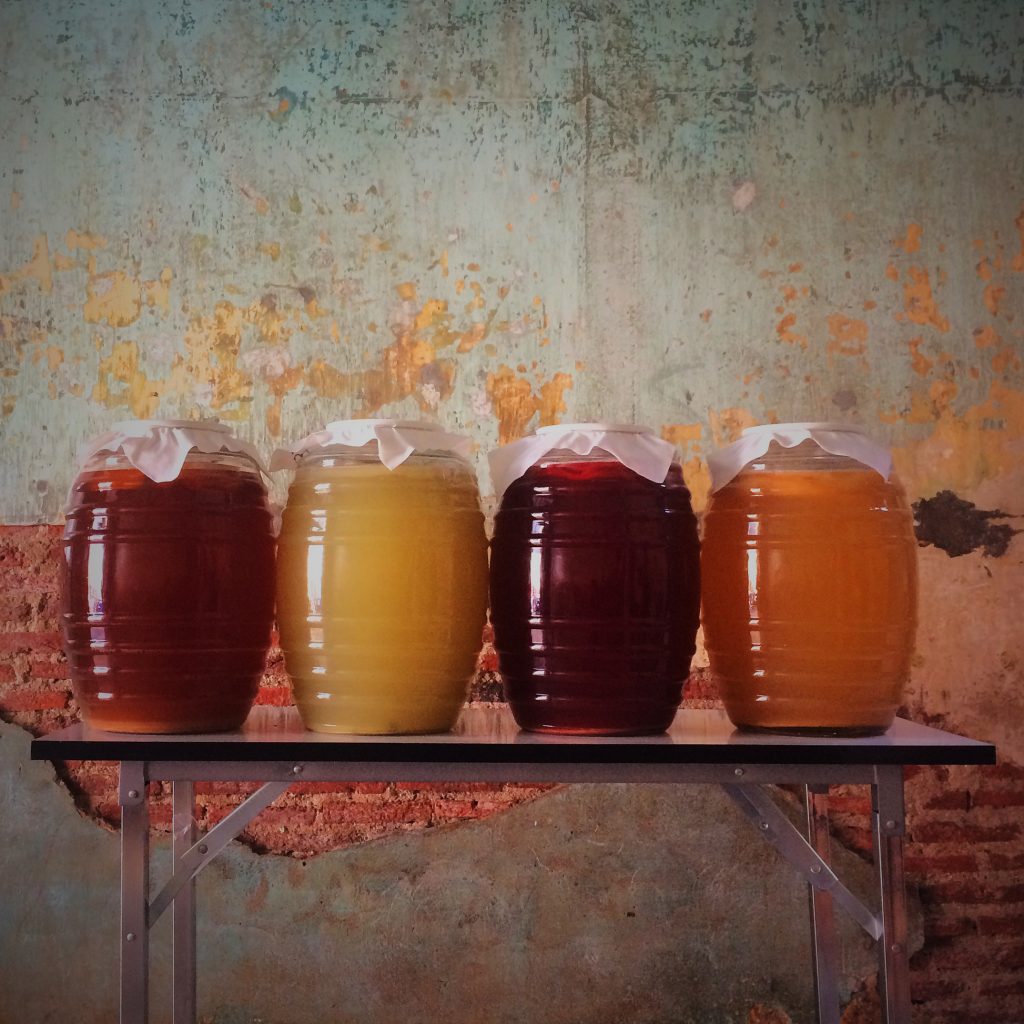 SCOBY’s
SCOBY’s
*ALWAYS ferment in glass, wood or lead free ceramic
For the sake of your health and the planets, we ask that you please don’t buy SCOBY’s or kombucha packaged in plastic. Yes, lately, everyone seems to sell SCOBY’s this way. But it wasn’t always like this. Avoid contamination, the starter culture is usually the most acidic form of kombucha, it’s pH is usually below 3.0. Acidic liquids ( kombucha ) will leach chemicals from plastics.
*Cleanliness, purity and sterility are the most important things to making delicious kombucha. Make sure your glass vessel is clean and sterilized before adding your tea and cultures. Distilled vinegar works well and so does very hot water to sanitize.
*Never add your cultures to hot tea. Wait for it to cool. When a new SCOBY is forming it doesn’t like vibrations, moving or to be disturbed at all. So let your new baby grow in peace for the first week.
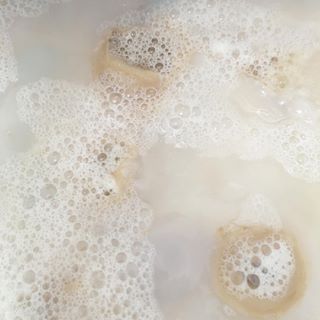
*To avoid mold on top of your SCOBY keep it moist and away from any windows or fruit.
*When collecting starter culture for your next batch, always take it from the top of your last batch of kombucha. At the bottom is where all the yeast have gone dormant and you don’t want those in your next batch, it will make the bacteria to yeast ratios of of sync.
PRO TIP: After you collect your starter culture to make your next batch wait until that culture has completed a full 30 days of fermentation. For Example: If you bottled your kombucha at 21 days wait 9 more days before making the next batch. It’s also totally OK to let your starter culture sit at room temperature for 40, 50, 60+ days. Just make sure the SCOBY stays moist. When you add this starter to your next batch theres no need to mix up the yeasts at the bottom of the jar. **Please note that if you added juice or fruit to your cultures this method won’t work. Only pure kombucha will be safe at room temperature indefinitely.
*Something to consider – We have stored our Pure Kombucha™ starter cultures at room temperature for years (sealed in airtight bottles) and used to them to make kombucha again. The first batch is usually not so great but after a couple batches they are just like new again. 🙂
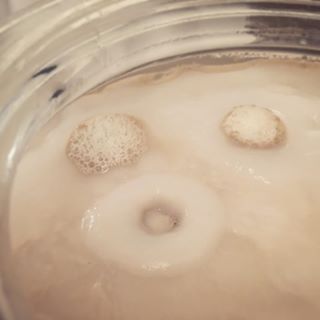
Myth number #1 – A SCOBY is “fast” or “strong” because it is thick. Sorry to burst your scoby, but, these SCOBY”s are just old and have many layers. They are also full of Acetobacter, which is the bacteria that makes it taste like strong vinegar. This is why you should always peel off and use only the top layer of your SCOBY. Compost grandpa SCOBY’s. Fresh, young SCOBY’s are better. You only want the top layer. The rest of the SCOBY doesn’t matter. It just takes up space in your brew making it more sour with less probiotics.
*Consider how much volume that fat, old SCOBY takes up in your vessel, that could be a whole lot more glasses of kombucha for you to drink!
**Something to imagine – You have a friend named Bob. Bob never changes his clothes. Every couple weeks Bob just puts a new pair of clothes on over top of his old pair of clothes. Bob is your old SCOBY.
***When a new SCOBY is formed, it forms on top of the old SCOBY. A new SCOBY will form every time a new batch of kombucha is made. The only SCOBY that matters is the new SCOBY on the top layer. Peel the top layer and compost the rest. Even if the SCOBY breaks, it’s going to still work OK.
Just like Bob should remove and discard his dirty old clothes. So should your SCOBY.
Myth number #2 – Which came first? The culture or the SCOBY? You don’t need a SCOBY to make kombucha, only the starter culture. A new SCOBY will form every time you make a new batch of kombucha. You can make kombucha with only the starter cultures but, you can not make kombucha with only a SCOBY.
Myth number #3 – SCOBY’s need to be perfect and white. They don’t need to be pretty and perfect, just healthy and fresh (and not packaged in plastic!). The most important thing is to have a good, pure starter culture. We recommend getting starter cultures from multiple sources that come in glass, and that were fermented in glass with 100% organic ingredients. We have produced tens of thousands of SCOBY’s. They come in all different styles, shapes, sizes, textures and colors. SCOBY’s will get darker and more rubbery with age. Just watch out for mold.
*Black and green mold are the worst. Don’t even breath near it. And if you get mold, you have to throw everything away, very thoroughly sanitize your glassware and start all over with new cultures.
**In the case of kombucha, SCOBY’s are actually mostly made up of yeast (and Acetobacter). It’s kinda like a yeast hotel. The technical term for a SCOBY is Zoogleal Mat or Bio-film.
***You can eat SCOBY’s too. Some people make candy, jewelry and clothes.
BAD IDEA: Storing your SCOBY’s in a SCOBY hotel. We can hear the collective groan here. But really, compost those old SCOBY’s to reduce the risk of contamination and to get a better tasting, cleaner ferment. They are not goldfish.
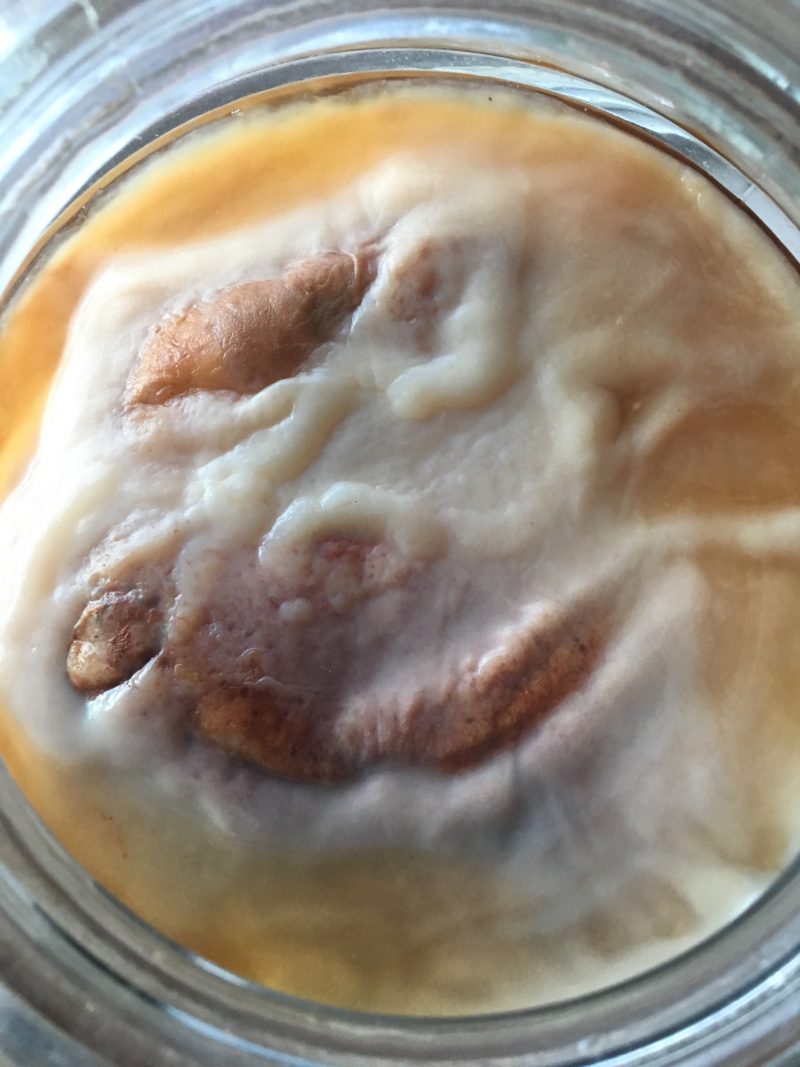
PRO TIP: Keep your SCOBY’s and cultures exclusive to that blend of tea. Training your cultures and using only SCOBY’s formed from each individual blend of tea, over generations, will result in better flavors and stronger cultures.
Second Ferment
This is the part where people add fruits and juice. The internet says to do this to make it more palatable. We don’t do this, or even condone it really. Especially, if your are interested to reduce sugar intake. More collective groans, we know this is everyones favorite part. But, if you use quality ingredients and brew your tea the way we recommend, your kombucha will be delicious without adding anything on the back end. It’s actually easier this way too! Why do we suggest this?
You are adding more sugar with fruit/ fruit juice. You are also contaminating your cultures.
*Something to consider – If you ferment your kombucha in a 2.5 gallon(10 liter) batch and you start with about 2 cups (500g) of sugar. You follow the information on the internet that says ferment kombucha for 5 -10 days. You ferment your kombucha for 10 days. What do you have?
**About 85% of the original sugar and very little probiotics or beneficial acids. It’s pretty much just sweet tea at that point – 21 grams of sugar per 16 ounces (500ml) – or about 425 grams of sugar (85%) left in your kombucha after 10 days. If you add fruit or juice you are adding about 15-20 grams of sugar on average per serving, 8 ounces (250ml).
***If you assume a 50/50 blend – juice to kombucha – then for every 8 ounces of kombucha (250ml) you get 11 grams of sugar and for every 8 ounces (250ml) of juice, another 15+ grams of sugar from the juice. Making your total sugar intake 26+ grams. For reference a can of Coke has 38 grams of sugar and a bottle of Pure Luck® – Pure Kombucha™ has about 1.5 grams of sugar. If you are drinking kombucha as a soda replacement, we are sorry to say, that you are not really getting any benefit at all. This is why we are sticklers to a minimum 21 day fermentation and don’t recommend adding juice.
****Something else to consider is safety, if you leave this kombucha with a high sugar content at room temperature in a closed bottle for more than three days the bottle will explode.
PRO TIP: Why do most brands add juice? One reason is to make the consumer think they are getting more nutritional benefit. The other is to flavor the kombucha. The third to make more money.
* Really, many brands ferment only one kind of “kombucha”, a black and green tea blend, and for only 7-10 days. They use this “kombucha” across the board in all their flavors. Read the labels.
** There are very few brands in the world that can claim they are selling 100% raw, undiluted kombucha made from only tea and fermented a minimum of 21 days. There’s only one that can claim they are selling Pure Kombucha™, that doesn’t need refrigeration, has a shelf life of 6 months at room temperature and more than a year with refrigeration. Can you guess who?? 😉
PRO TIP: The very best kombucha advice we can give, K.I.S. (Keep it simple)
FOR MORE INFORMATION: To get all the personalized tips and tricks not listed here. Take a class at our new Kombucha School™ – get a kit, SCOBY and our proprietary cultures and learn much more detailed information from our brewmaster himself. Contact us anytime at the link on the bottom of the page.
And no, no one has ever died from drinking kombucha. You can’t believe everything you read on the internet. 😛
Cheers!
